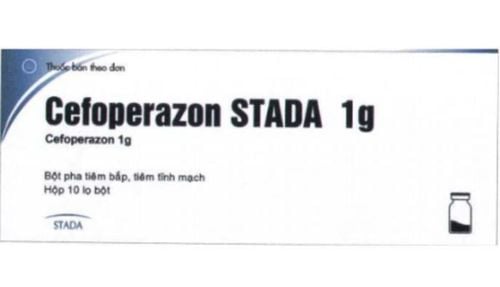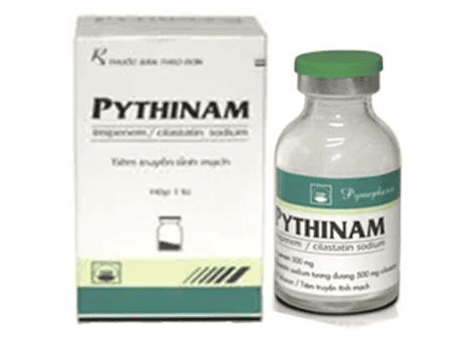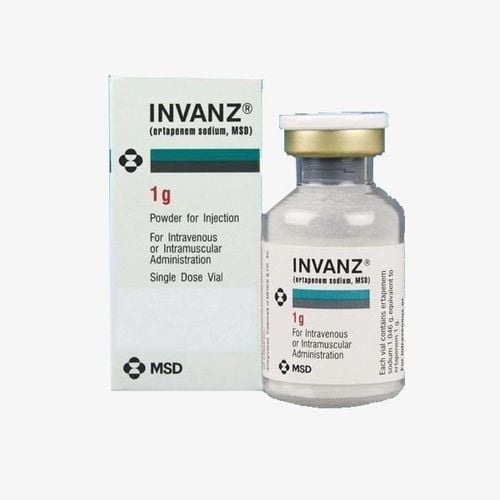This is an automatically translated article.
Flamitra is manufactured and registered by Flamingo Pharmaceuticals Limited Company, belongs to the group of drugs used to treat parasites, anti-infectives, antivirals, antifungals. To ensure safety for your health and maximize the effectiveness of your treatment, you need to take Flamitra exactly as directed by your doctor.
1. What is Flamitra?
Flamitra medicine has the main ingredient containing the active ingredient Imipenem with the strength of 500mg and Cilastatin (in the form of Cilastatin sodium) with the content of 500mg. The drug is prepared in the form of a powder for injection, packing: Box of 1 vial.
2. Indications of the drug Flameitra
Flameitra is indicated for use in the following cases:
Treatment of lower respiratory tract infections, pneumonia. Intra-abdominal infections, endocarditis, pelvic infections, urogenital infections, gynecological infections. Bone and joint infections, bacteremia, skin and soft tissue infections, fever with neutropenia, Melioidosis (Whitmore's disease).
3. Usage and dosage of the drug Flamitra
How to use Flamitra:
Flamitra is produced in the form of a powder for intravenous injection, not for direct infusion. Before using, it is necessary to mix the amount of medicine contained in the vial with the solution for infusion with a capacity of 100ml, the concentration to be mixed. The final dose should not exceed 5mg/ml. The infusion is done over a period of 30 to 60 minutes. During infusion, the patient should be monitored for convulsions, vomiting or nausea, and if so, the infusion rate should be reduced. The solution for infusion is not indicated for intramuscular administration and conversely, the intramuscular solution should not be administered intravenously. Dosage of the drug Flamitra:
The dose of the drug Flamitra is prescribed by the treating doctor, the dose is calculated according to the active ingredient Imipenem in the drug. The recommended dose is as follows:
Adults:
Intravenous infusion:
Mild to moderate infections: Dose 250 to 500mg, every 6 to 8 hours, up to 4 grams a day. Severe infections with moderately sensitive bacteria: dose 1g/time, spaced 6 to 8 hours, maximum dose used 4g/day or 50mg/kg body weight. An infusion dose of 250 - 500 mg is done over a 20 to 30 minute period and a 1 gram dose over a 40 to 60 minute period. Intramuscular injection:
Only applicable to mild to moderate infections: With a dose of 500 - 750mg / time, every 12 hours. When injecting, it is necessary to inject deep into large muscle mass, the maximum dose in 1 day should not exceed 1500mg. In children < 12 years old: There have been no studies and reports proving the efficacy and safety of Flamitra in children, however, intravenous Flamitra has been used in this population. effective, with a dose of 12 to 25 mg/kg body weight/time, spaced every 6 hours.
In patients with renal failure, the therapeutic dose should be reduced as follows:
Creatinine clearance from 30 to 70ml/min, use 75% of the usual dose. Creatinine clearance from 20 to 30 ml/min, using 50% of the usual dose. Creatinine clearance less than 20ml/min, use 25% of the usual dose. After hemodialysis, an additional dose is required.
4. Undesirable effects of the drug Flameitra
During the course of treatment with Flamitra, besides the effects of the drug, patients may experience the following undesirable effects:
Fever, itching, urticaria, wheezing, skin rash, tremors, dizziness, confusion, seizures, pain at the injection site, dizziness, vomiting, nausea, fatigue, sweating, colds (usually present with rapid infusion), severe diarrhea that may pass bleeding, abdominal pain or cramps, fever, thrombophlebitis. The risk of seizures is increased in patients receiving higher doses of imipenem than 2 grams per day.
5. Flameitra . drug interactions
When using Ganciclovir drug with Flamitra in combination, generalized seizures may occur. The plasma concentrations and half-life of the active substance Cilastatin contained in Flamitra were doubled when co-administered with Probenecid , however, without affecting renal variability. When Flamitra is used with carbapenem, plasma concentrations of valproic acid are reduced, resulting in ineffective seizure control.
6. Notes when using Flameitra
The use of Flamitra is not indicated in the following subjects:
Patients with a history of hypersensitivity to Imipenem, Cilastatin or any of the excipients contained in Flamitra. There is hypersensitivity to any antibiotic of the Beta-lactam group, Carbapenem. Do not use for pregnant women, breastfeeding mothers and children under 3 months of age. Caution when using Flamitra:
Caution when used in patients with partial cross-allergies to other beta-lactam antibiotics such as: a history of gastrointestinal disorders (especially enteritis), If there are CNS symptoms, it is necessary to reduce the dose or stop using the drug. Flamitra should be used with caution in patients with renal insufficiency. It is necessary to adjust the dose accordingly. Some undesirable effects of this medicine such as dizziness, hallucinations, dizziness, drowsiness may affect the ability to drive or use machines.
7. Storing Flameitra
Store Flamitra medicine in a cool, dry place, avoid direct sunlight or high temperature, because these agents can cause changes in drug substances, storage temperature Store properly below 30 degrees C. Keep out of reach of children.
Please dial HOTLINE for more information or register for an appointment HERE. Download MyVinmec app to make appointments faster and to manage your bookings easily.













